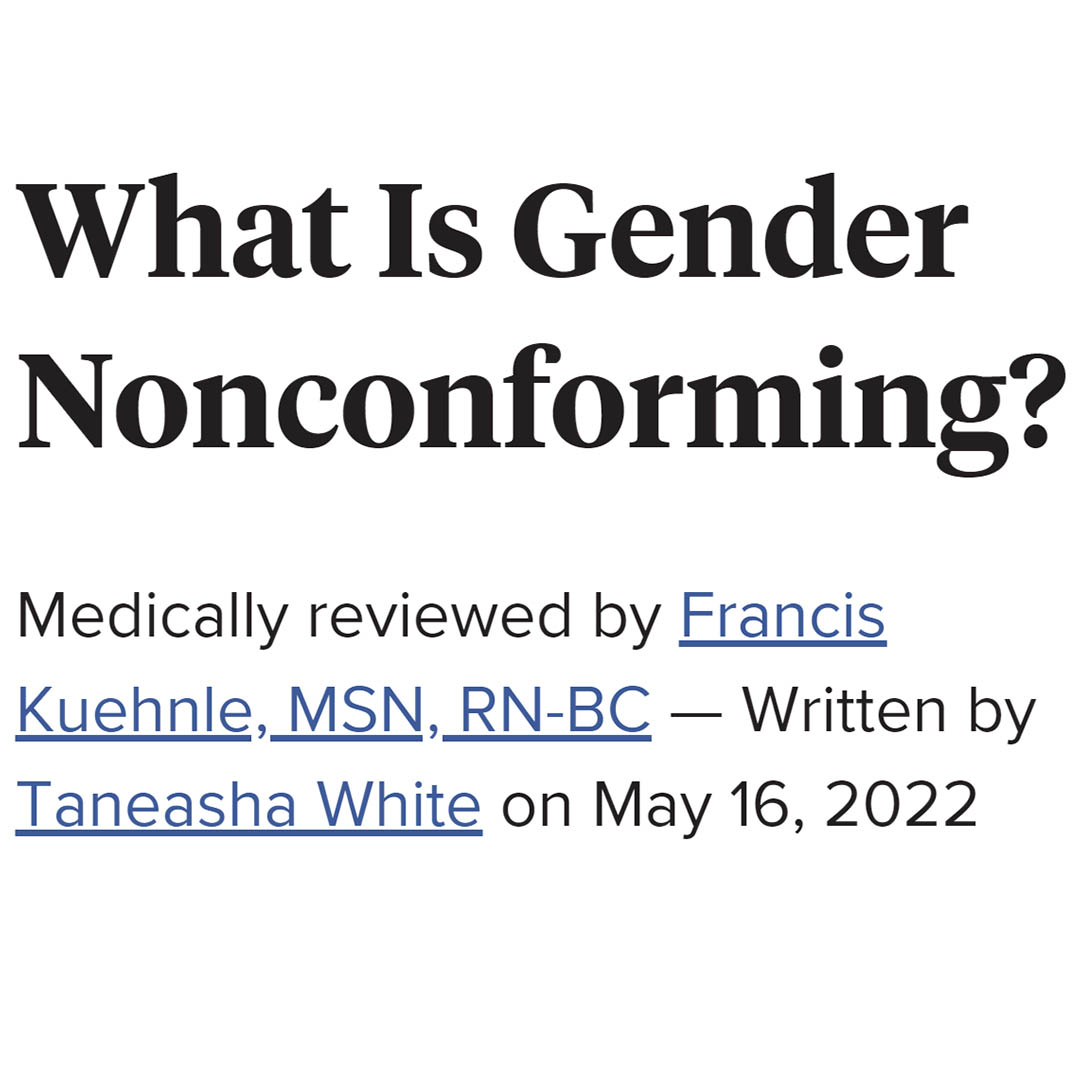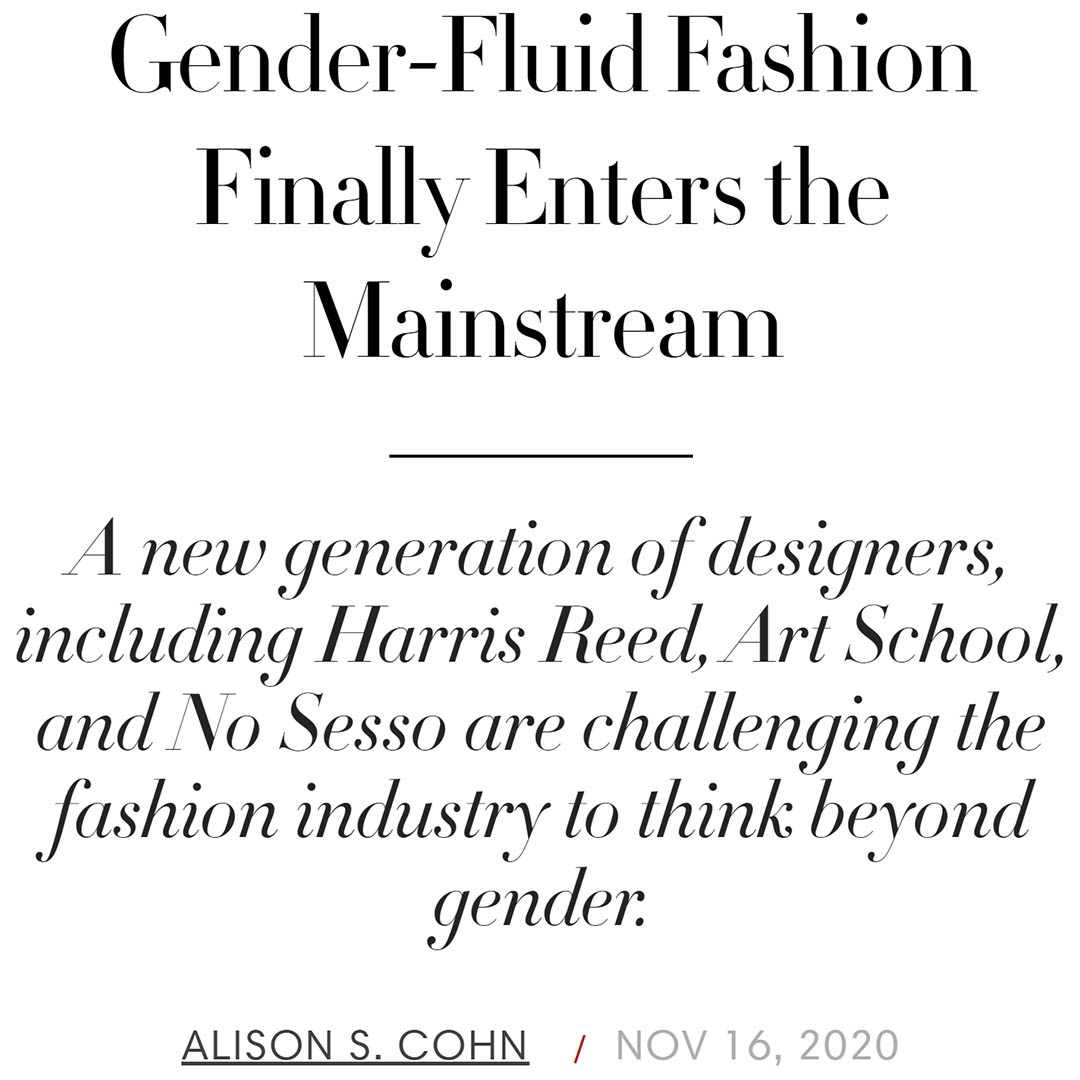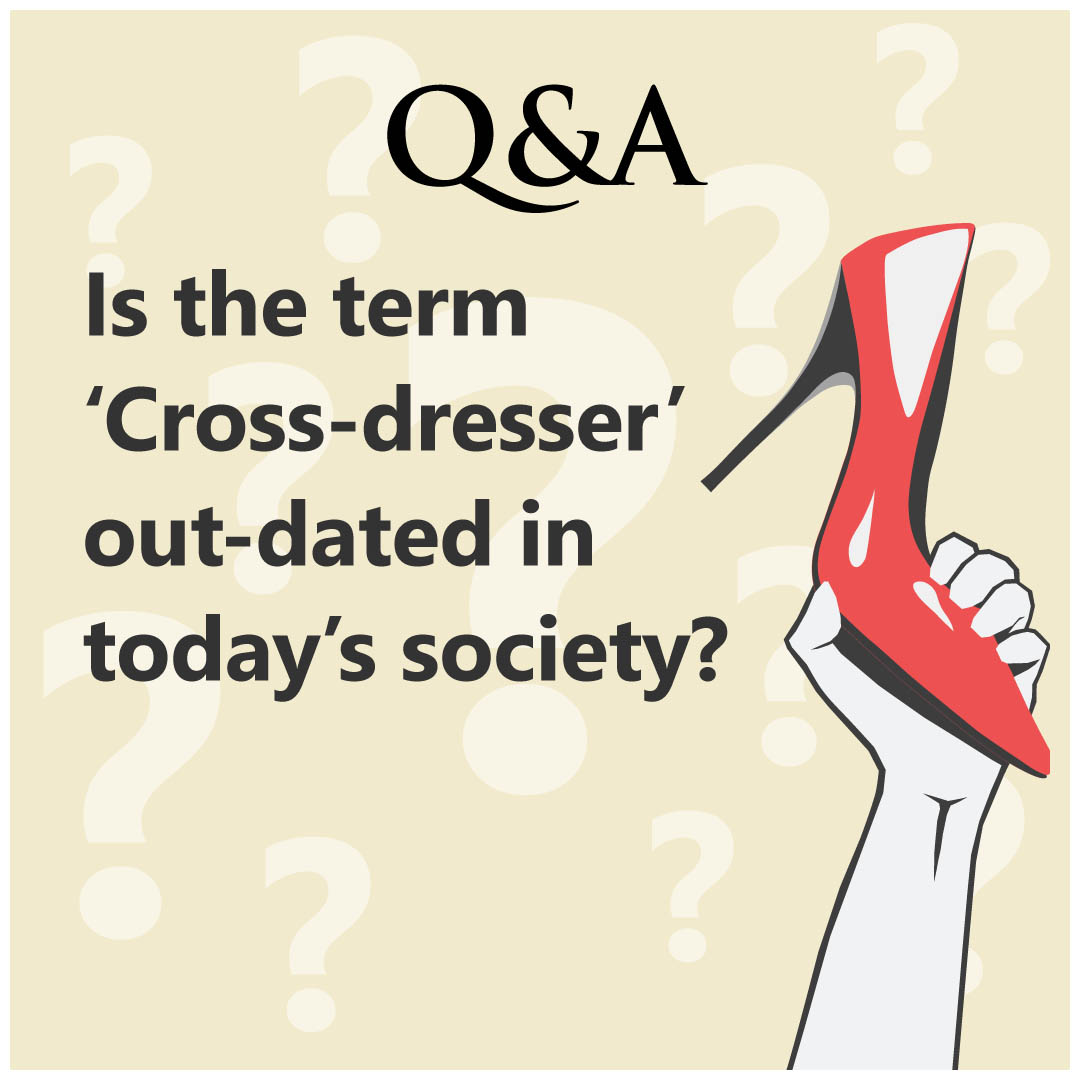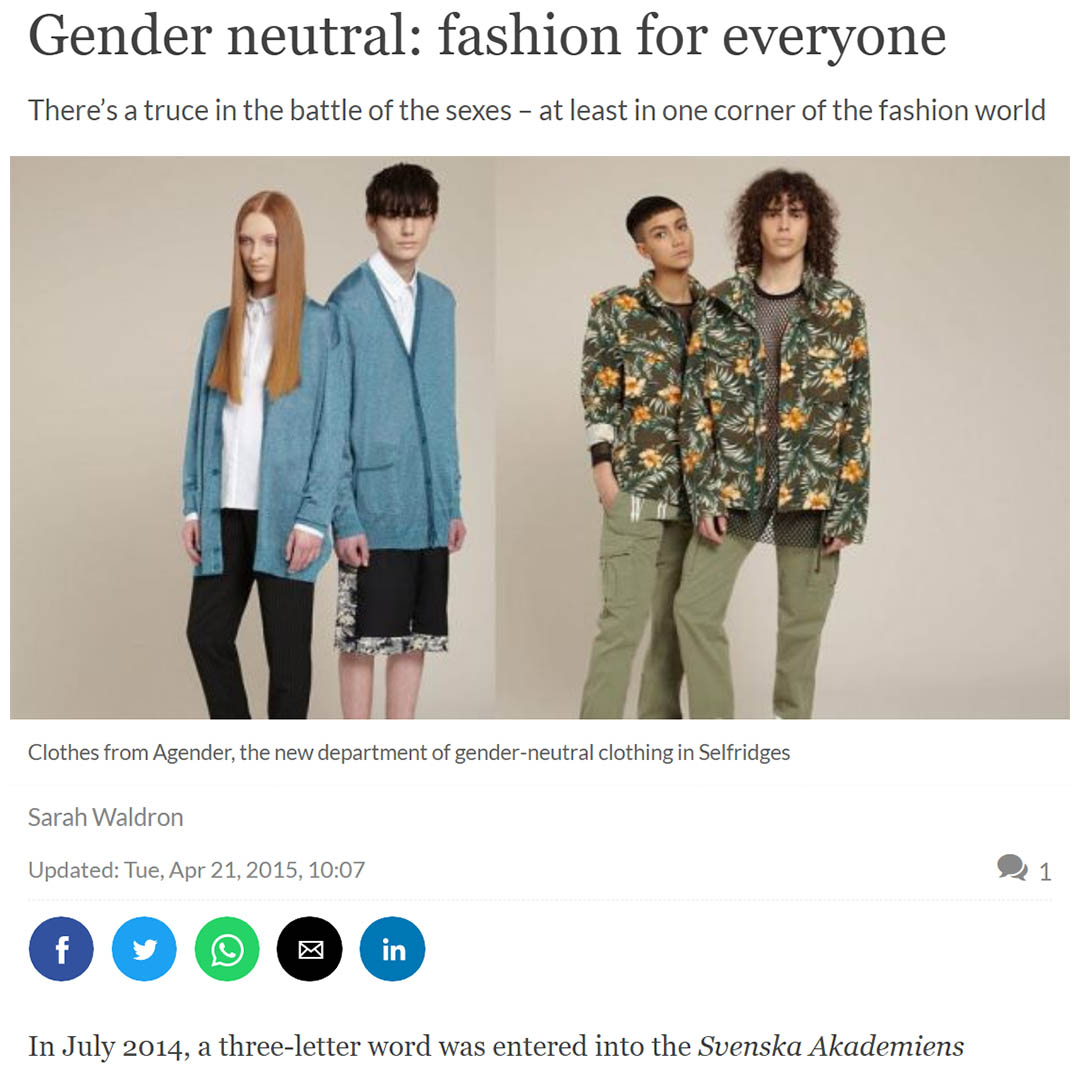Articles tagged with "Agender"
It's often a simple notion in your own head... "I like to wear heels and would like to wear them all the time". Ultimately you don't care what others think. You could be gender nonconforming. But what does that mean? This article from Psych Central unravels the meaning and puts it into context with other terms such as non-binary, genderqueer and genderfluid.
"Gender nonconformity is a way of expressing rejection of societal gender roles and expectations.
It isn’t automatically connected to a person’s gender identity or sexuality. Anyone of any gender identity can be gender nonconforming.
It’s best to inquire about how a person identifies and what pronouns they use rather than making any assumptions."
Original URL: https://psychcentral.com/health/gender-nonconforming
Posted: 27 October 2022
Today, we take a look back to 2020 and a Harpers Bazaar magazine interview with Harris Reed (@Harris_Reed), the then up and coming designer who is now probably best known for styling Harry Styles for the cover of Vogue magazine. That moment was a pivotal moment in Harris's career as it instantly catapulted him into the spotlight.
"I’d like to eradicate the categories of menswear and womenswear,” Reed says. “Fluidity offers an alternate way of being, crossing and merging masculine and feminine.”
Harris certainly has a way of making what we would normally call feminine styles and presenting them in a way in which we can call them gender neutral. He is definitely one to watch for the re-shaping of the fashion world we currently know.
...and if that's not enough gender-bending non-binaryness for you, to take a look at @FluidByHarrisReed for his curated collection of classic gender-bending looks from the stars.
Original URL: https://www.harpersbazaar.com/fashion/designers/a34458195/gender-fluid-fashion-harris-reed-no-sesso-art-school/
Posted: 3 September 2022
Is the term ‘Cross-dresser’ out-dated in today’s society?
Before we can answer that question, some definitions may be useful.
Cross-dressing: is the act of wearing items of clothing not commonly associated with one's sex. Cross-dressing has been used for purposes of disguise, comfort, comedy, and self-expression in modern times and throughout history.
Almost every human society throughout history has had expected norms for each gender relating to style, colour, or type of clothing they are expected to wear, and likewise most societies have had a set of guidelines, views or even laws defining what type of clothing is appropriate for each gender.
The term "cross-dressing" refers to an action or a behaviour, without attributing or implying any specific causes or motives for that behaviour. Cross-dressing is not synonymous with being transgender.
Another term for cross-dressing is Transvestitism. Someone who engages in Cross-dressing/Transvestitism is called a Cross-dresser(CD)/Transvestite(TV), although the term Transvestite is now commonly considered outdated and disrespectful. The term Transvestite (often shortened to the slang term "Tranny") was historically used as a slur against people who wore clothes of the opposite sex. Cross-dresser is now a much more accepted term. Cross-dresser was coined by the transgender community.
MtF and FtM Cross-dresser: A man who dresses in women's clothing is a male to female (MtF) cross-dresser. a woman who dressing in men's clothing is a female to male (FtM) cross-dresser. For women, the term is seldom used and the wearing of trousers/pants/men's shirts is often discounted as cross-dressing. This is because in our current society, male clothing is often considered gender-neutral. Therefore when someone uses the term "cross-dresser", the focus shifts mainly towards a MtF cross-dresser.
With those definitions made, two additional points are important to recognise:
a). Cross-dressing as it relates to Transgender: Wearing clothes intended for the opposite sex does not mean that the person identifies as the opposite sex. It is different from being Transgender or Transsexual. When transgender people dress according to their gender identity it is not necessarily the same as cross-dressing.
It is important to know that a cross-dresser does not necessarily have body or gender dysphoria (gender dysphoria means feeling uncomfortable with their body and gender they were born with), they are perfectly happy with their gender assigned at birth and have no desire to change their sex, but simply enjoy being able to cross-dress from time to time. However, Transgender describes people who feel that their gender identity is different from their biological sex.
Most transgender people do not appreciate being called cross-dressers, and for good reason. As they are wearing clothes of their own gender identity they consider themselves, and should be considered by others as the gender they are dressing in. A Transgender woman wearing women's clothes is not a cross-dresser, nor is she a drag queen. She is just a woman. Similarly, a Transgender man, wearing men's clothes is not a cross-dresser, nor is he a drag king. He is just a man.
b). Cross-dressing as it relates to Drag: A cross-dresser should not be confused with drag queens/kings. Drag is a special form of performance art based on the act of cross-dressing. Drag queens are usually male performance artists who dress in female character. Drag Kings are mostly female performance artists who dress in male character.
Now, to get down to answering the question...
As gender refers to the socially constructed roles, behaviours, expressions and identities of girls, women, boys, men, and gender diverse people we can deconstruct that concept. While the term Cross-dresser works well for some people, as it has for years, for many others they do not feel that it works well for them. For non-binary or agender people (who don't identify with the gender binary of male & female) who want to wear certain clothes as part of their gender expression, feel that the term is obstructive and often offensive towards them. With the realisation that clothes have no gender, a skirt or a pair of trousers are essentially just coloured and textured fabric cut and sewn into a garment. The clothes know nothing of gender other than that assigned to them by their creator. The same, of course applies to shoes - high heels are not women's shoes... they are just high heels.
A growing number of people believe that today's socially constructed gender stereotypes don't serve us well in enabling fully inclusive gender expression that recognises our diversity. With the central fact that gender is a social construct, gender labelling of clothing is also a therefore also social construct and can equally be challenged and deconstructed. Gender labelling of clothing perpetuates the construct, but in more recent years this is slowly changing with manufacturers and retailers removing, or neutralising gender labelling on clothes and on signage in stores.
Manufacturers and retailers, now too numerous to mention, are also making items of clothing more traditionally intended for a single sex for both sexes, while recognising that the key differentiator is not actually our biological sex, but our body shape. Does the term cross-dresser still stand up when the clothes have no gender labels? Maybe not.
All clothing, of whatever shape, colour, texture or style has been worn by both sexes as normal daily wear at some point in history, so why do we have gendered clothing now? Visual communication is one of the many reasons we dress the way we do. Our gender identity is expressed visually through what we wear, as can be our social status or rank within an organisation. Sometimes our visual appearance, what we wear, make-up, hairstyle, skin colour, whether rightly or wrongly, can trigger others around us through our learned and often habituated social conditioning to make a judgement on how they should interact with us. Aside from organisational ranking, we should not treat people differently because of their appearance. Everyone is born equal and should be treated as such. Does what they wear really matter more than their actions and achievements as a person?
In conclusion, the term Cross-dresser is fine for a socially constructed world in which there is a gender binary, but it does not work well in a non-binary world where gender is expressed on a spectrum and where many believe that clothing has no gender to start with. When it comes to the use of the term today, if the logic used to describe a man in "women's" clothes as a crossdresser does not hold when applied to a woman wearing "men's" clothes - it's not logic, it's sexism.
When clothing has no gender there are no lines to "cross", hence no cross-dressing and why we therefore believe that the term cross-dresser is out-dated and should decline in use.
Posted: 27 July 2022
This article from The Irish Times explores gender neutral fashion, highlight how London based icon Selfridges introduced Agender, a new brand of gender-neutral clothing and how it desexualises fashion. The article concludes "When all traces of lust are wiped from the equation, when fashion is stripped down to the bare bones, genderless clothing isn't even about the man or the woman wearing it: it's about the person inside. Which is all that should really matter."
Original URL: https://www.irishtimes.com/life-and-style/fashion/gender-neutral-fashion-for-everyone-1.2177032?mode=amp
Posted: 14 July 2021







